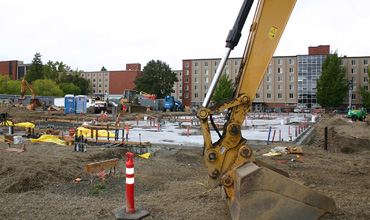
Concrete is a crucial building material, and the construction industry has seen significant advancements in concrete technology. One of the latest developments in the field of concrete is volumetric concrete, which has revolutionized the way construction projects are carried out. In this blog, we will explore the concept of volumetric concrete and its benefits.
What Is Volumetric Concrete?
Volumetric concrete, also known as mobile concrete, is a type of concrete that is mixed and poured on-site, as opposed to traditional concrete, which is mixed at a plant and transported to the construction site. Volumetric concrete is mixed in a mobile batching plant, which consists of a mixer, storage compartments for cement, sand, and aggregates, and a computerized system for accurate measurement of materials.
Benefits of Volumetric Concrete
The key advantage of volumetric concrete is that it allows for greater flexibility and efficiency in the construction process. With traditional concrete, contractors must order a specific amount of concrete and wait for it to be delivered. This can be problematic if there are delays or changes in the construction schedule. However, with volumetric concrete, contractors can adjust the amount and type of materials on-site, which provides greater flexibility and allows for last-minute changes to be accommodated.
Another advantage of volumetric concrete is that it can be customized to meet specific project requirements. Contractors can adjust the mix of materials on-site, which allows for greater control over the strength and durability of the concrete. This is particularly beneficial for complex construction projects that require specialized concrete mixes, such as those with unique performance requirements or those that are exposed to harsh environmental conditions.
Volumetric concrete is also more environmentally friendly than traditional concrete. Because it is mixed on-site, there is less waste, and the amount of carbon emissions associated with transportation is significantly reduced. Additionally, because the mix can be adjusted to meet specific requirements, there is less need for additional materials, which reduces the environmental impact of the construction process.
One of the key factors that contribute to the quality of volumetric concrete is the accuracy of the mixing process. The batching plant used for volumetric concrete has a computerized system that ensures the precise measurement of materials. This results in a more consistent mix of concrete, which ensures that the final product is of high quality and meets the required performance specifications.
Volumetric concrete is also more cost-effective than traditional concrete. Because it is mixed on-site, contractors only pay for the amount of concrete that is used. This eliminates the cost of unused concrete, which is a common issue with traditional concrete. Additionally, because the mix can be adjusted on-site, there is less need for additional materials, which reduces the overall cost of the construction project.
Conclusion
Volumetric concrete is a significant advancement in the construction industry that offers many benefits over traditional concrete. It is more flexible, customizable, environmentally friendly, and cost-effective than traditional concrete. Additionally, the accuracy of the mixing process ensures that the final product is of high quality and meets the required performance specifications. As the demand for sustainable and efficient construction practices continues to grow, volumetric concrete is likely to become an increasingly popular option for contractors and construction companies.